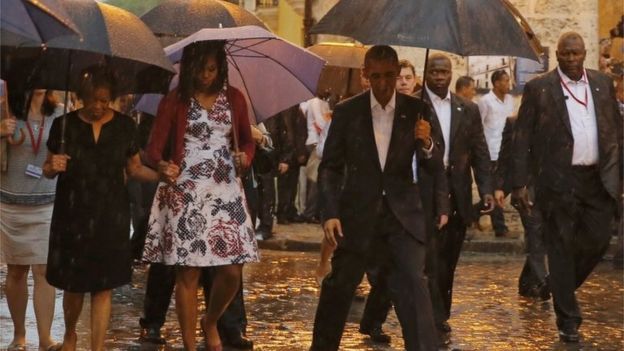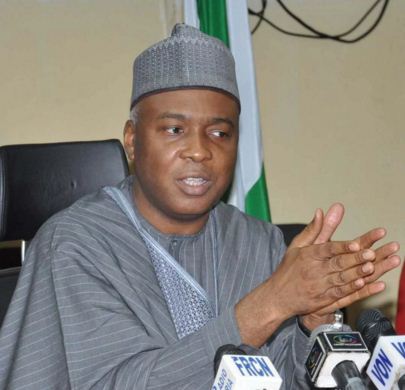Roger Baxter, Chief Executive- Chamber of Mines South Africa
It is easier to talk about the abundant natural resources in Africa; the gold bars in their carats, diamond and silver stones, copper, coal, and all other such resources in Africa. But how these natural resources which have been explored over the years have made significant impact and improvement in the living standard of Africans propels the asking of some salient questions as regards the mining industry across the continent.
In this interview with Eruke Ojuederie of African Leadership Magazine, Roger Baxter, the Chief Executive Officer of Chamber of Mines South Africa notes the contributions and positive impact of the industry on the economic lives of South Africans; some key issues that impede the growth of the industry and threaten its sustainability; as well as the role of government in addressing these issues. Excerpts:
Mining is one of Africa’s greatest assets. What measures are being put in place to ensure that the industry significantly influences the South African economy?
It is true that mining is important for Africa. Indeed, the mining industry is the foundation upon which South Africa’s industrial development was built. Mining continues to contribute significantly to the South African economy, not only at a macro-economic level, but at local and community levels.
According to Chamber of Mines South Africa data, in 2014 the South African mining industry:
• contributed 7.6% to GDP (>17% if the multiplier effects are taken into account)
• contributed around 15% to FDI
• 20% of private investment
• created 1.4 million jobs (500,000 directly)
• made up 25% of exports
• was a major contributor to transformation through the mining Charter and to community development through SLPs
At present, the South African mining industry is under significant economic and financial pressure. This is not only a local phenomenon, but a global one.
The slowdown in the Chinese economy, anaemic growth rates in other regions and the strength of the US dollar have contributed to declining demand and prices for most metals and minerals.
Not only is the South African mining industry suffering as a result of depressed commodity prices, but we face some unique challenges too, including:
• unsustainable cost increases;
• infrastructure challenges, including electricity supply disruptions and unreasonable price hikes;
• workplace challenges (including increasing depth and decreasing grades) and disruption of operations; and
• increasing expectations and demands from stakeholders.
A sustained depressed outlook for the metals we mine, in combination with a high cost profile, threatens the sustainability of the industry. This would jeopardise:
• Employment, training and development and many other benefits of mining.
• Tax contributions to the state.
• Contributions to communities and society at large through local economic development and other broader contributions.
A positive development in recent months has been the Phakisa process. This process is driven by the Presidency, and has seen good collaboration between government, industry, unions and others. It is aimed at bringing together all key stakeholders to devise an action plan for growth and transformation which encourages investment. Given that this is a Presidential process, it is not possible to divulge details of the discussions at this stage, but we are optimistic about the interactions and discussions taking place.
Do you think the mines in South Africa are in a good state in terms of safety? How do you think they can be improved?
Mineral Resources Minister Mosebenzi Zwane recently released mine safety statistics for 2015.
We have seen a significant improvement in overall performance amongst mining companies that participate in industry initiatives, particularly those mining companies represented by the Chamber of Mines.
Since 1994, there has been a sustained reduction in the number of fatalities at South African mining operations. The 87% improvement in this outcome over the past 22 years is testimony to the significant safety efforts of management, employees, government and trade unions.
These significant improvements demonstrate that our goal of Zero Harm is possible and achievable despite the fact that our operating conditions are more challenging than anywhere else in the world. As employers, the industry will continue to work steadfastly with other stakeholders in our quest for Zero Harm.
The Chamber of Mines and its members will continue to work with its stakeholders including government and organised labour to protect the occupational health and safety of all mineworkers.
Are there any specific strategies in place to reduce the rate of mining accidents in South African mines?
The mining industry invests significant time and energy into improving the safety of employees. Safety trends over the past two decades show significant and consistent progress. Since 1993, the annual number of fatalities has reduced from 615 to 77 in 2015. This progress is a direct result of the various tripartite health and safety initiatives adopted by the mining industry.
The industry maintains its focus on working towards Zero Harm, striving to ensure that every employee returns from work unharmed, every day.
In 2009, the Chamber established the MOSH Learning Hub, to help companies learn improved safety methods from one another. Among the success stories of this work are:
• Various improvements in underground support methods that have resulted in fewer fatalities attributable to fall of ground incidents
• Through the Mine Health and Safety Council, more than R250 million has been spent on research into the seismicity associated with our deep-level mines. The research outcomes led to new mine designs and methods. The number of fatalities associated with seismicity has fallen from 48 in 2003 to four in 2014
• In line with the Culture Transformation Framework developed by the Mine Health and Safety Council, we are changing our accident investigation methods to reduce blame, modifying our bonuses to enhance Zero Harm production, are planning more emphasis on leadership being visible in the operations
• In the area of occupational health, foggers and scraper-winch covers have reduced dust levels significantly
Furthermore, South African mining companies are working closely with each other and equipment producers to develop better and safer working methods and technology.
The safety, health and wellbeing of our employees are integral components of our day-to-day operations. The mining sector is fully committed to achieving zero harm, where every mining employee returns from work each day, sound in health and body.
Leadership is one of the major challenges faced in Africa. Has this challenge affected the industry in any way? And In what ways do you think the leadership quality in African governance can be improved?
There are a number of critical issues which the Chamber of Mines (which represents 90% of South African mining production by value) is currently engaging with government on.
Legislation
In South Africa, current levels of investor confidence is concerning. Investors naturally prefer certainty and stability particularly around legislation, and consistent returns.
Among the issues which the Chamber will be engaging on during the year are the:
• Review of the Mining Charter, which will need to take account of both the need to advance transformation and the current economic environment;
• Resolution of issues surrounding the continuing consequences of BEE transactions where the Chamber has applied to the High Court for a declaratory order; and
• Finalisation of the MPRDA amendments so that certainty can be achieved.
The industry is fully supportive of transformation and Chamber members comply with the MPRDA and the Mining Charter.
In our view, the mining sector has done more to progress the transformation of South Africa’s economy than any other component of the private sector. Having said that, the industry remains on the important transformation journey despite serious economic headwinds.
One of the requirements of the Mining Charter relates to ownership which requires that mining companies transfer 26% of equity to Historically Disadvantaged South African (HDSA) entities.
In many cases where mining companies facilitated substantial HDSA participation, HDSA shareholders elected to exercise their rights to realise the value of their shares, with inevitable result that HDSA-shareholding in the mining company, which facilitated their substantial participation, has subsequently been eroded.
That they have been able to do so, demonstrates that those HDSA shareholders received meaningful ownership. It also demonstrates the meeting of the objective to create a critical mass of broad-based black economic empowerment, even if this is then transferred into other areas of the economy, or to other parts of the mining industry.
To penalise mining companies retrospectively for acting in good faith to promote meaningful HDSA economic participation is, in the Chamber’s view, unfair. It would require them to implement repeated empowerment transactions, each time at a cost to the remaining shareholders. To us, that is clearly unsustainable.
The intension of the declaratory order is to provide guidance on the principles applicable to the assessment of the ownership element of the Mining Charter, particularly in respect of the continuous consequences of BEE deals.
The industry (and investors) is concerned about on-going dilution of company values, should BEE deals continue to be required to maintain ownership levels at 26%. On the other hand, we believe that constraining BEE shareholders through lock-in clauses will undermine the real transformation of the sector.
Electricity supply and cost
Almost all electricity in South Africa is purchased from state owned entity, Eskom.
The Chamber of Mines has recently opposed Eskom’s R22 billion Regulatory Clearing Account application to the National Electricity Regulator of South Africa (Nersa) in respect of 2013/14. This application is over and above the 8% tariff increase Eskom was granted for that year as part of the third multi-year price determination.
The mining industry supports Eskom’s intent to resolve South Africa’s long-term energy crisis. We also made it clear that we have no objection to the recovery of unforeseen costs arising from circumstances that Eskom cannot control.
But, the Chamber opposes the recovery of costs and lost revenues that could have been avoided if the utility was managed better. The application would also penalise these customers for Eskom’s own failure to supply sufficient electricity and at the same time reward Eskom for its operational failures. Eskom’s customers are expected to bear an excessive share of the revenue risk.
Electricity costs have been increasing at significant rates. Since 2008, there has been a 300% increase in the electricity tariff. For example, in the gold sector electricity represented an average 20% of total cash costs compared to 8% in 2008.
The Chamber estimates that Eskom’s proposed electricity tariff increase of 16.6% would jeopardise an additional 20,000 of the 119,000 remaining jobs in the gold sector, and another 20,000 of the 189,000 jobs in the platinum sector.
A more-stable electricity pricing environment is critical to ensuring some form of investment takes place in the future.
In conclusion
We acknowledge that differences of opinion will always exist amongst different stakeholders. That we have different opinions on matters is however not insurmountable. Ultimately, we have the same interests at heart – which is to ensure the sustainability of the South African mining industry.



